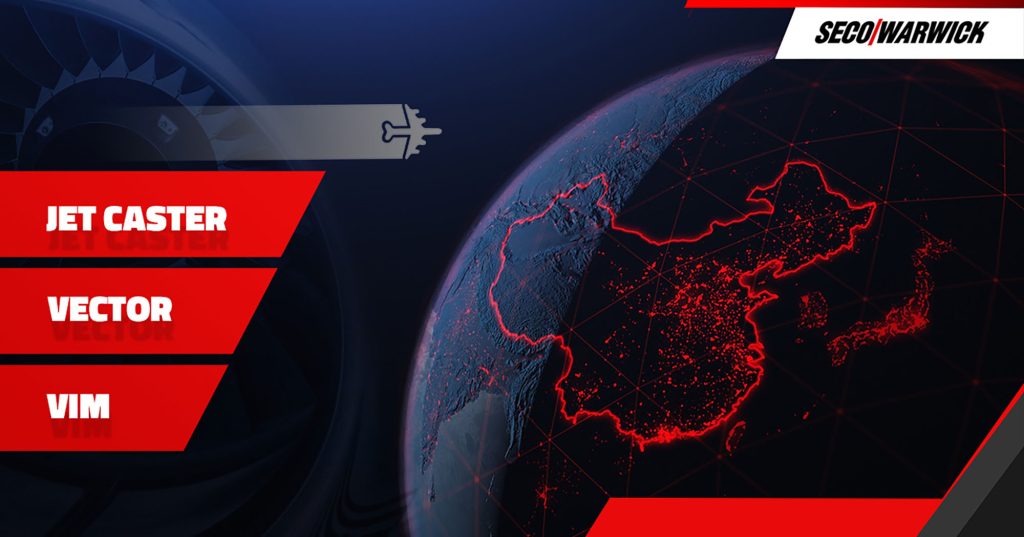The SECO/WARWICK Group will deliver as many as three solutions to the Chinese manufacturer. Two of them are furnaces for vacuum metallurgy, while the third one is a horizontal furnace for vacuum heat treatment.
This is SECO/WARWICK’s first contract with this company, which demonstrates that the gas turbine and aviation market is emerging from the temporary (pandemic) stagnation.
SECO/WARWICK Group’s furnaces are innovative and reliable. They are characterized by high efficiency, and thanks to process automation – process repeatability. They are distinguished by modern control systems and precise load feeding systems. Titanium and its alloys, tantalum, tungsten, niobium, zirconium, silicon, nickel, and cobalt alloys can be processed in metallurgical furnaces.
“SECO/WARWICK as a Group has been creating solutions for metal heat treatment and metallurgy for decades. For industry, we are a reliable and credible partner with extensive knowledge and production capabilities. As important as the Chinese market is for us, this expertise as a technology supplier is also essential to be successful in this market. Currently, Asia accounts for approximately 30% of the SECO/WARWICK Group’s annual sales, and almost half is accounted for by aviation industry entities. These are not only customers from China, but also from South Korea or Japan. Orders from this area cover a full range of vacuum metallurgy furnaces, including PAM, VIM and VAR, but also Vector type vacuum furnaces and the highly appreciated continuous CAB lines for aluminum heat exchanger brazing,” said Sławomir Woźniak, the CEO of SECO/WARWICK Group.
Furnaces for the aerospace industry
The equipment on order for vacuum metallurgy includes a 50 kg induction melting furnace for equiaxed castings and a 50 kg JetCaster vacuum induction melting furnace for monocrystalline castings and directional solidification. Both furnaces will be manufactured in a standard configuration, and their performance will help give Zhejiang Sinmiao Power Technology Co., Ltd. a competitive advantage. Whereas the Vector vacuum furnace, with a pressure of 10 bar and molybdenum insulation, can operate at high temperatures – up to 1500ºC, with the maximum gross loading weight of 600 kg. This is the third solution in the same configuration sold by the company on the Chinese market in the last two years.

“We bought an Equiax casting furnace and a single crystal casting furnace. The third solution ordered is the Vector high-temperature vacuum furnace. They all meet the critical requirements of the petroleum transportation, gas turbine and aviation industry for which we work. SECO/WARWICK is one of the few companies offering such highly specialized equipment of the highest standard and in such a wide technological scope. We believe that thanks to this cooperation, our production will be more efficient and effective,” commented Cai Jiwei from Zhejiang Sinmiao Power Technology Co., Ltd.
The increasing importance of vacuum metallurgy is a consequence of the aviation industry’s growing production needs. State-of-the-art jet engines use advanced monocrystalline cast blades. The user-friendly control system ensures precise processes: casting, temperature control, as well as comprehensive data collection. The SECO/WARWICK Group’s furnaces are equipped with unique and intuitive control systems which ensure repeatability, which is so important for the aviation industry, and unrivaled throughput.
A year of the aviation industry development
Air passenger traffic should reach pre-pandemic levels by mid-2023, predicts the leasing company Avolon in its latest report. Overall, the aviation industry should close 2023 with a profit of $4.7 billion.1 In 2023, the air traffic recovery will be driven by Asia. The key in this regard is the recent border openings by China, the world’s second largest aviation market, which should translate into a rapid increase in air travel in this country. The air traffic recovery obstacle is no longer the lack of demand, but the ability of airlines to get planes back to flying.
The manufacturers’ situation is affected by the fact that there is a problem of aircraft absence on the horizon – during the pandemic years, the production of 2.4 thousand planes were planned, but they were never produced.
Therefore, this is a good time for aviation part manufacturers to look for solutions to increase production efficiency. SECO/WARWICK – a key partner for aviation – has such solutions.

